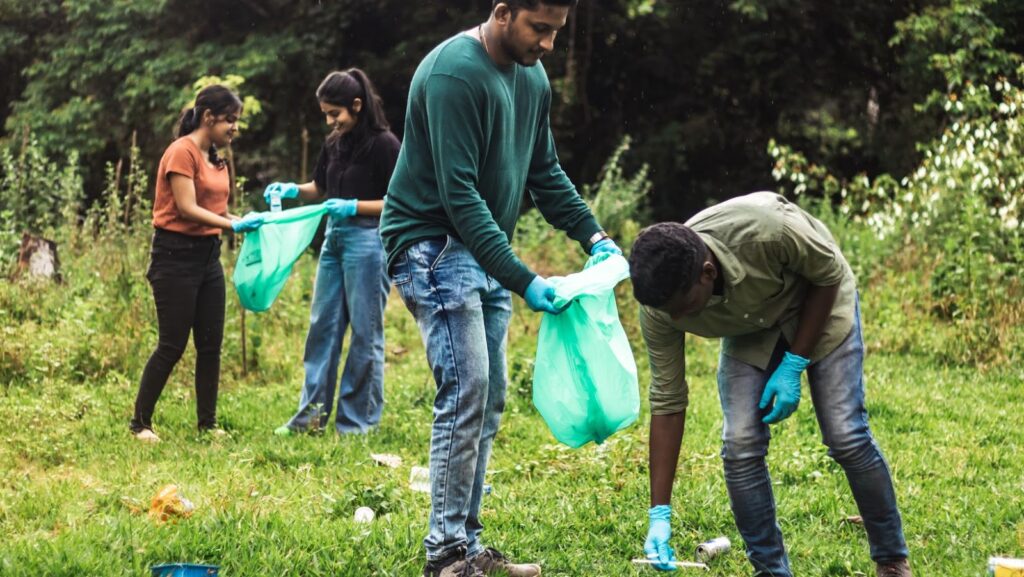In a world increasingly aware of environmental challenges, the question of whether Americans are living a sustainable lifestyle has never been more relevant. With climate change and resource depletion at the forefront of global concerns, individuals and communities are examining their habits and choices. Sustainability isn’t just a trend; it’s a necessity for ensuring a healthy planet for future generations. Americans are making strides in adopting green practices, from recycling and reducing waste to embracing renewable energy. However, the journey towards a fully sustainable lifestyle is complex and multifaceted. Cultural, economic, and social factors all play a role in shaping how sustainability is perceived and practiced across the nation. Understanding the current landscape of American sustainability efforts can shed light on progress made and challenges ahead. By exploring these dynamics, one can better appreciate the collective impact of individual actions and the potential for a more sustainable future.
Are Americans Living A Sustainable Lifestyle
Many Americans incorporate sustainable practices like recycling, using renewable energy, and supporting local products. Data from the Environmental Protection Agency shows that about 35% of municipal waste in the U.S. is recycled, indicating increased awareness. Solar power adoption has also seen growth, with over 2 million installations by 2021. Community-supported agriculture has gained popularity, reducing carbon footprints and promoting organic produce. Despite these efforts, challenges remain. Transportation contributes significantly to emissions, with cars being a primary source. According to the U.S. Energy Information Administration, transportation accounts for 29% of total greenhouse gas emissions. Consumption patterns also pose hurdles, as high demand for fast fashion and single-use products persists. Economic factors further influence sustainability in the U.S. Green technologies and sustainable products often come with higher upfront costs. This barrier limits accessibility, especially in underserved communities. Additionally, policy implementations vary by state, creating inconsistencies in sustainable initiatives nationwide. Social awareness is crucial for advancing sustainability. Educational programs raise consciousness about environmental impact, creating a foundation for future progress.
Current Lifestyle Trends in America
America’s lifestyle trends reveal a complex interaction between sustainability efforts and consumer behaviors. Despite strides in some areas, consumption habits present significant hurdles. Americans exhibit diverse consumption patterns that impact sustainability efforts. Fast fashion remains prolific, with Data from Business Insider indicating around 80 billion new clothing items produced globally each year, many destined for U.S. consumers. Single-use plastics also persist, comprising about 50% of plastic waste. Although reusable alternatives are emerging, widespread adoption hasn’t yet occurred. Mindful consumption is gaining traction with organic and locally-sourced products seeing increased market demand. This shift suggests a growing awareness, yet it’s counterbalanced by convenience-driven choices that undermine sustainability. Economic constraints frequently influence these decisions, as sustainable goods often remain more expensive than conventional options. These patterns highlight the challenges of achieving sustainable living in America, underscoring the need for education and policy that encourage mindful consumption.
Environmental Impact of American Lifestyle
The lifestyle of Americans significantly affects the environment through the consumption of resources and generation of waste. These habits contribute to pressing issues such as climate change and resource scarcity. Americans have one of the highest per capita carbon footprints globally, primarily due to energy consumption, transportation, and industrial activities. The U.S. Energy Information Administration reports that the average household emits approximately 17 tons of CO2 annually. Personal vehicles contribute significantly, with over 250 million vehicles in use promoting emissions-intensive commuting. Additionally, energy use in residential areas, often stemming from non-renewable sources, adds to the carbon output. Despite renewable energy growth, fossil fuels remain the dominant energy source, complicating efforts to reduce emissions. The lifestyle in the U.S. involves high resource consumption rates, impacting natural resource availability. Americans use about 150 gallons of water per person daily, putting stress on freshwater supplies, especially in areas facing drought. The extraction of raw materials for manufacturing electronic devices and fashion items accelerates resource depletion. For example, mining for rare earth metals, vital for electronics, not only depletes mineral reserves but also causes environmental damage during extraction. While recycling efforts are increasing, consumption often outpaces sustainable practices, leading to resource scarcity challenges.

